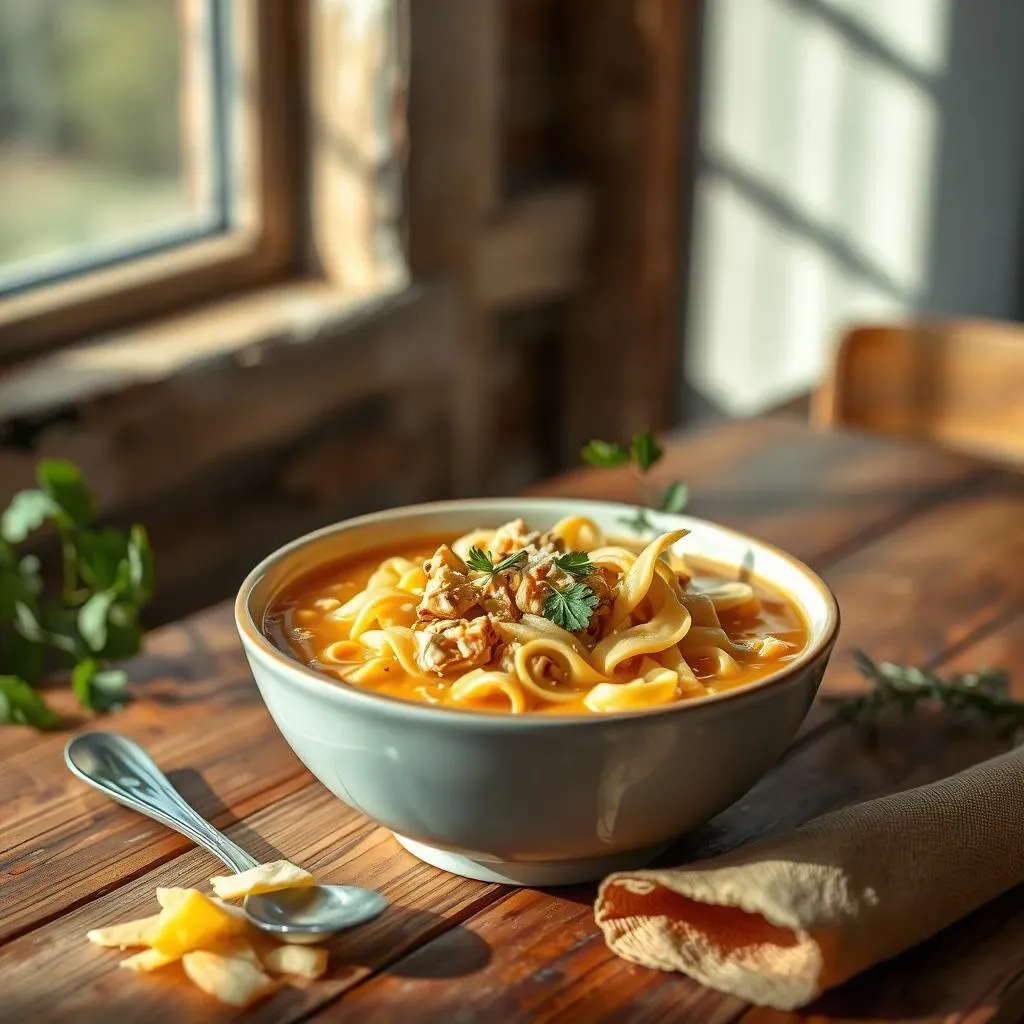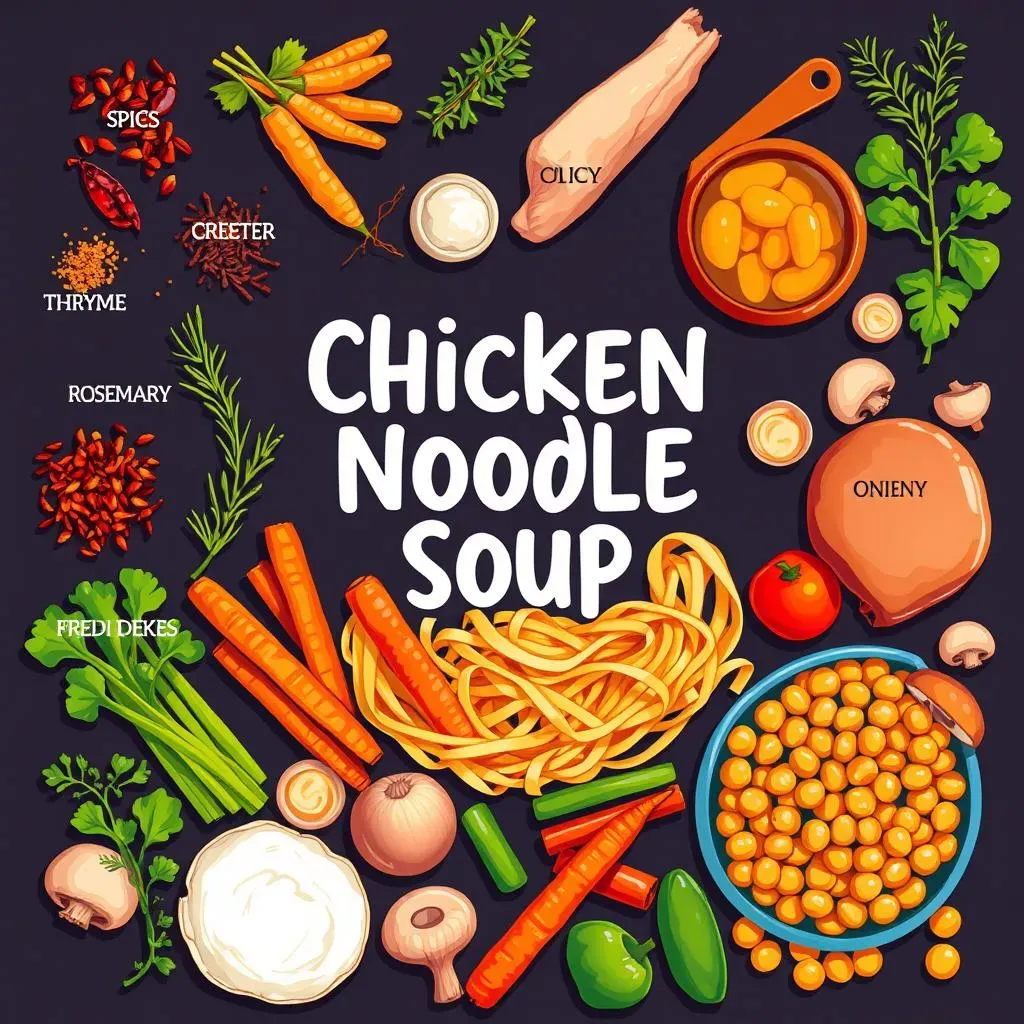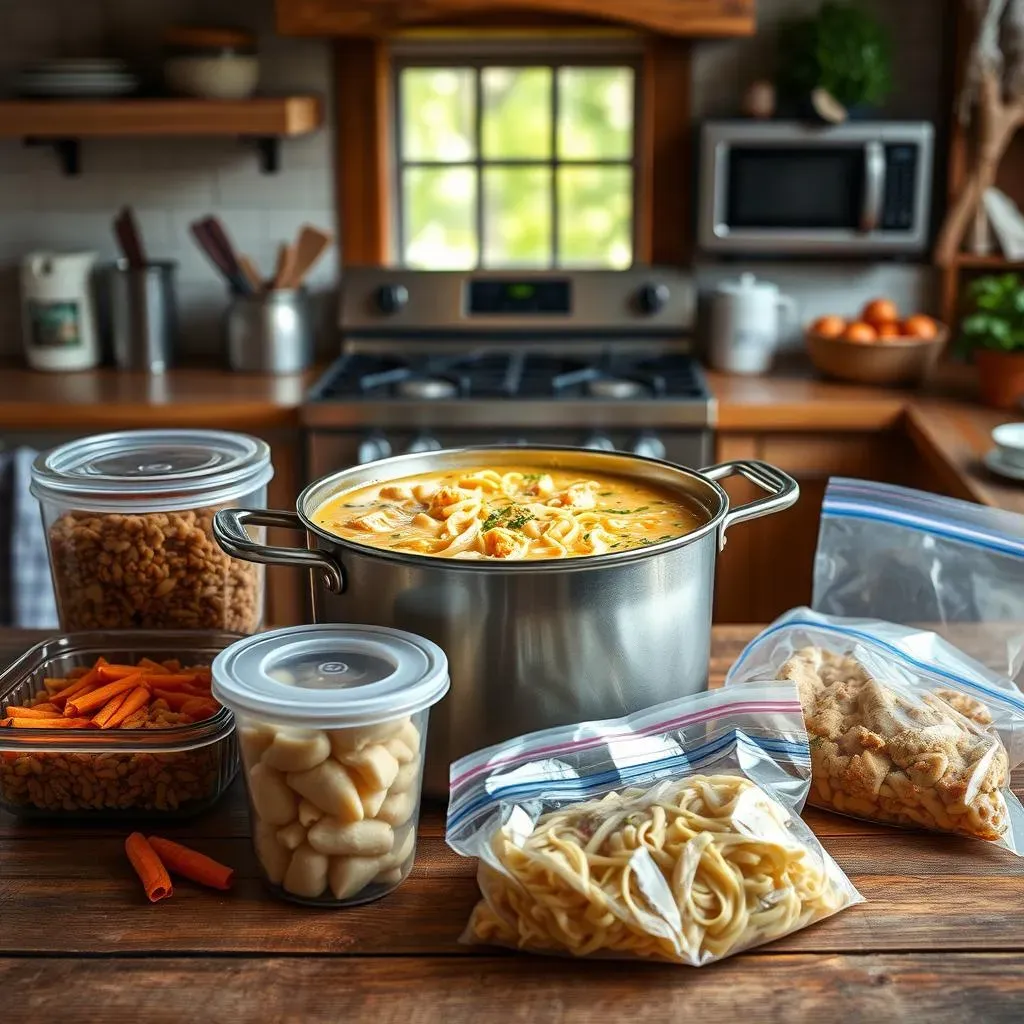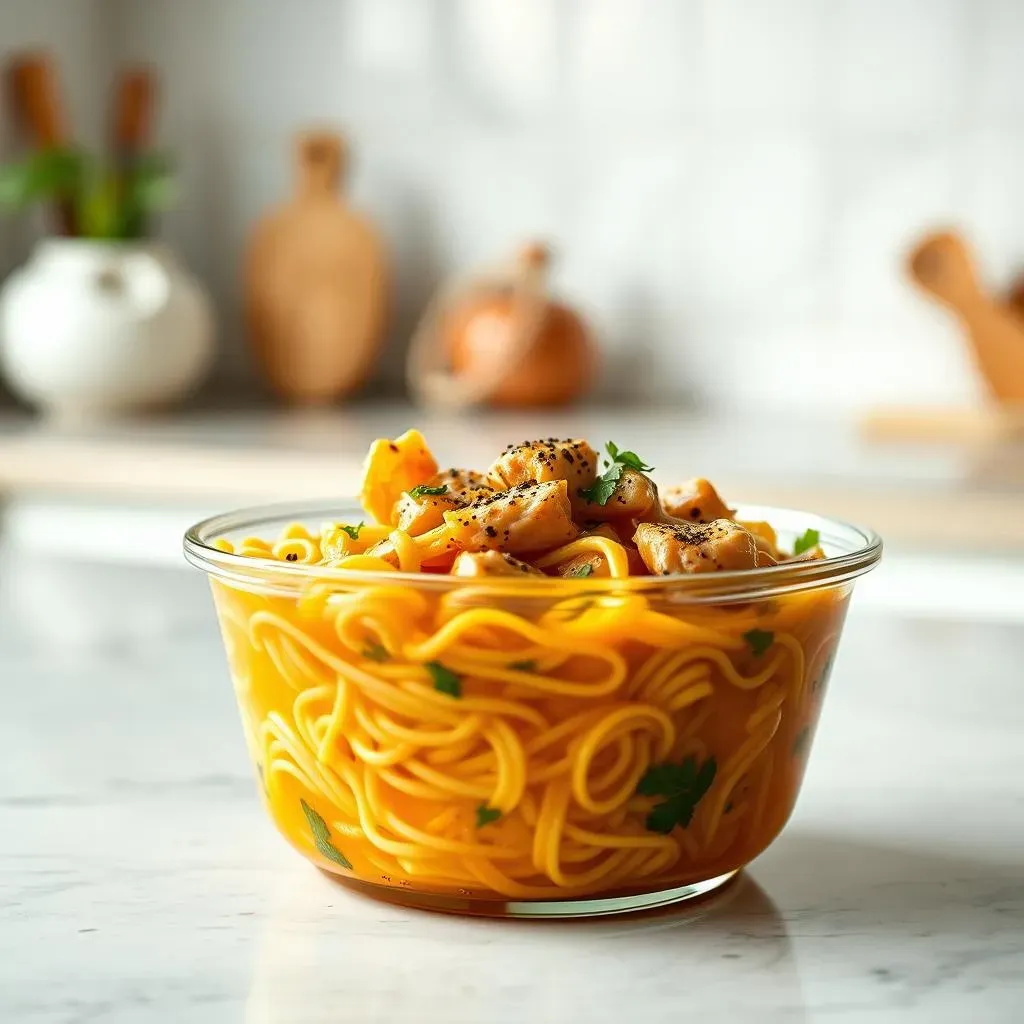Table of Contents
Craving a warm, comforting meal that's also perfect for meal prepping? Look no further than homemade chicken noodle soup! This isn't just any soup; it's a customizable, freezer-friendly powerhouse that's ready to rescue your lunch or dinner plans. We're not talking about the canned stuff, we're going to show you how to make chicken noodle soup for meal prep that's so good, it will make you want to eat it every single day. In this article, we will walk you through a straightforward method for crafting this classic dish, ensuring you have a batch ready for the week ahead. You'll learn how to make it your own with easy variations, and we will give you the secrets to storing and reheating it perfectly. Get ready to ditch the takeout and embrace the delicious simplicity of homemade chicken noodle soup, your meal prep game is about to level up!
Crafting Your Chicken Noodle Soup for Meal Prep

Crafting Your Chicken Noodle Soup for Meal Prep
The Foundation: Broth and Chicken
Okay, let's get real about the base of our soup. Forget that watery stuff; we're aiming for a rich, flavorful broth that's going to make you want to slurp every last drop. I like to start with a good quality chicken broth, or if I'm feeling ambitious, I'll make my own. Poaching the chicken directly in the broth is my go-to; it keeps it super moist and adds even more flavor to the liquid. Don't be shy with the seasoning either; a generous pinch of salt and pepper is just the start.
I prefer using chicken breasts, they're lean and easy to shred later on. However, feel free to use thighs if you are feeling it, the key is to ensure that the chicken is fully cooked. Once the chicken is done, take it out of the pot and set it aside to cool. Now, before we go any further, it's time to skim off any excess fat from the broth. This will give us a more clean and clear soup. The goal is a flavorful, lean, and delicious broth for our meal prep.
Veggie Power and Noodle Prep
Next up, it's time to load up on the veggies. This is where you can really get creative. I always go for the classic combo of carrots, celery, and onions, but sometimes I'll throw in some garlic for extra flavor. Don't be afraid to experiment with other options, like parsnips, zucchini, or even spinach. The key is to chop them up into bite-sized pieces so they cook evenly. Sauté these veggies in the pot for a few minutes to bring out their natural sweetness.
Now, for the noodles, I have a little trick. I cook them separately and add them to the soup right before I portion it out for meal prep. This helps to prevent them from getting mushy. I'm a big fan of egg noodles, but you can use any pasta shape you like, or you can even use rice for a gluten-free option. Just be sure to follow the package directions to achieve the perfect al dente texture. Remember, it's all about building layers of flavor and texture.
Ingredient | Purpose | Notes |
|---|---|---|
Chicken Broth | Base Flavor | Use low sodium to control salt |
Chicken Breast | Protein | Can substitute with thighs |
Carrots, Celery, Onions | Vegetables | Add flavor, texture, and nutrition |
Egg Noodles | Carbohydrates | Cook separately to prevent mushiness |
Customizing Your Chicken Noodle Soup Meal Prep

Customizing Your Chicken Noodle Soup Meal Prep
Spice It Up
Okay, so you've got the basic chicken noodle soup down, but what if you're feeling a little adventurous? This is where the fun starts! Think of your soup as a blank canvas, ready to be painted with all sorts of flavors. If you're like me and love a bit of heat, a pinch of red pepper flakes or a dash of hot sauce can really kick things up a notch. And if you prefer something more herby, try adding some fresh thyme, rosemary, or parsley. Don't be afraid to experiment with different combinations. I once added a spoonful of pesto, and it was a game-changer! It's amazing how a simple tweak can transform the whole dish.
Another way I like to customize my soup is by adding some aromatics. A few cloves of garlic, ginger, or even a bay leaf can add an extra layer of depth and complexity. If you’re feeling fancy, a squeeze of lemon juice brightens the flavors. I love to add a bit of turmeric for its vibrant color and health benefits. The best part about customizing is that you can tailor the soup to your exact preferences. It's all about making it your own and never getting bored with your meal prep.
Protein and Veggie Remix
Let's talk about switching up the main players. While chicken is a classic, you could easily swap it out for turkey, rotisserie chicken, or even some chickpeas if you're aiming for a vegetarian option. The key is to have a protein that you enjoy and that works well with the other flavors. You can also use different cuts of chicken, like thighs for a richer flavor or shredded chicken for easy eating. The possibilities are endless.
Don't forget about the veggies! While carrots, celery, and onions are the usual suspects, feel free to mix things up. Try adding some mushrooms, bell peppers, or even some leafy greens like spinach or kale. I love adding some roasted sweet potatoes for a bit of sweetness and texture. You can also add some corn for extra flavor and fiber. The more veggies, the merrier, especially when you are trying to create a balanced meal. The goal is to create a soup that's not only delicious but also packed with nutrients.
Customization | Ideas | Why it works |
|---|---|---|
Spices | Red pepper flakes, curry powder, smoked paprika | Adds heat, depth, and complexity |
Herbs | Thyme, rosemary, parsley, cilantro | Freshness and aromatic notes |
Protein | Turkey, chickpeas, tofu, shredded rotisserie chicken | Different textures and flavors |
Vegetables | Mushrooms, bell peppers, spinach, kale, corn | More nutrients, fiber, and textures |
Storing and Reheating Your Chicken Noodle Soup for Meal Prep

Storing and Reheating Your Chicken Noodle Soup for Meal Prep
Cooling and Portioning
Alright, so you've made this amazing soup, and now you need to store it. The first rule of soup club is: let it cool down before you put it in the fridge. I know, I know, you’re probably hungry, but trust me on this one. Putting hot soup straight into the fridge can raise the temperature and create a breeding ground for bacteria, which is a big no-no. So, let it sit out for a bit, or even better, put it in an ice bath to speed things up. Once it's cooled, it's time to portion it out. I like to use airtight containers for this, and I’m obsessed with those glass ones, they’re just so satisfying.
When portioning out, remember that the noodles will soak up some of the broth. So, I tend to add a little extra liquid to each container to keep things nice and soupy. If you're planning on freezing your soup, leave a little extra room at the top of the container, since liquids expand when frozen. And if you're planning on eating it within the next couple of days, the fridge is your best friend. Just make sure to store it in a way that ensures it stays fresh and doesn't pick up any weird fridge flavors.
Reheating Magic
Now, for the best part – reheating and eating! If your soup is coming from the fridge, the process is pretty straightforward. You can reheat it on the stovetop over medium heat, stirring occasionally until it's heated through. This is my favorite method because it helps to maintain the soup's texture and flavor. If you’re in a hurry, the microwave works too, but I find that it can sometimes make the noodles a bit mushy.
If you're reheating from frozen, you'll want to thaw it out in the fridge overnight before heating it up. This will give you the best results. However, if you're in a pinch, you can also microwave it from frozen, but be sure to use the defrost setting and give it a stir every now and then. No matter which method you choose, make sure your soup is piping hot before you eat it. And if you’ve got some fresh herbs on hand, a sprinkle on top can really bring it all to life. Now, go enjoy the fruits of your labor!
Storage Method | Best For | Tips |
|---|---|---|
Airtight Containers (Fridge) | Short-term storage (up to 5 days) | Cool soup completely before storing |
Freezer Bags/Containers | Long-term storage (3-6 months) | Leave some headspace for expansion |
Stovetop Reheating | Best for maintaining texture and flavor | Heat over medium heat, stir occasionally |
Microwave Reheating | Quick option | Use defrost setting if frozen, stir often |
